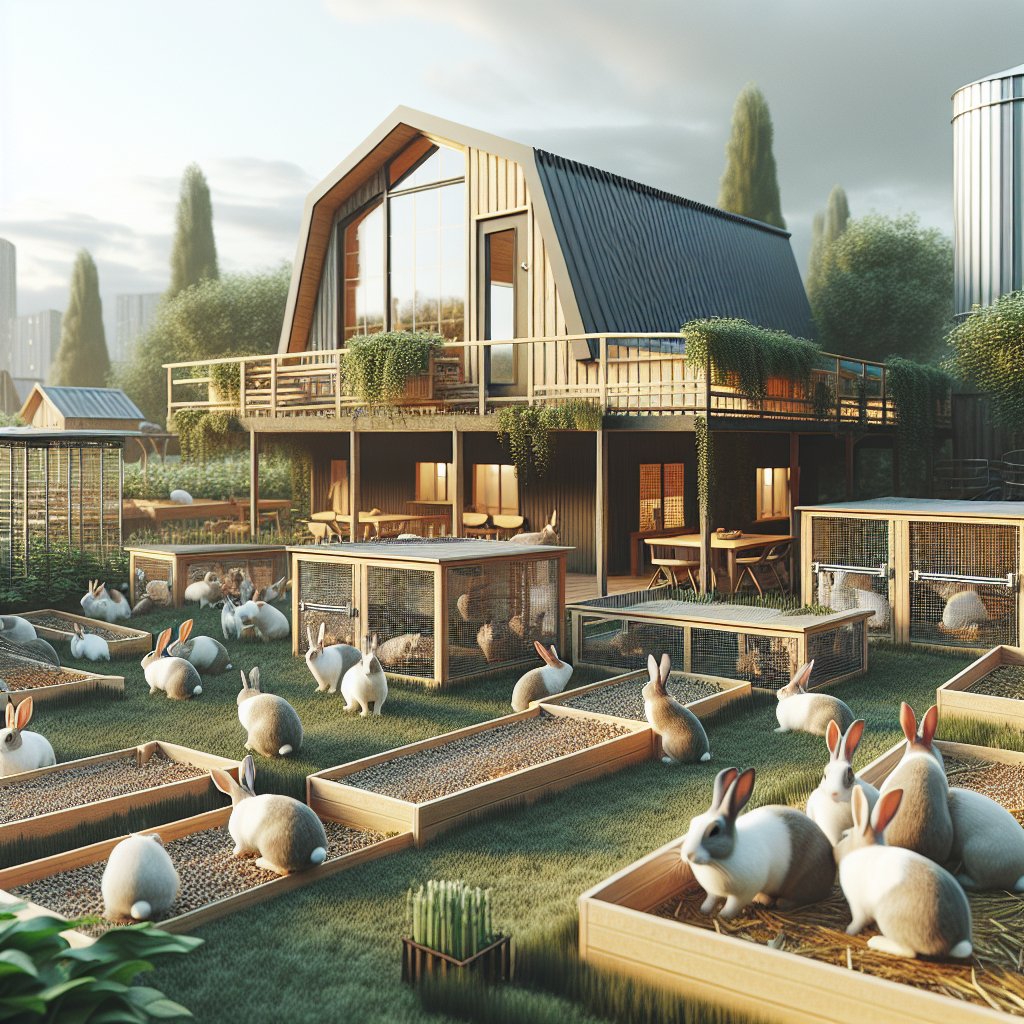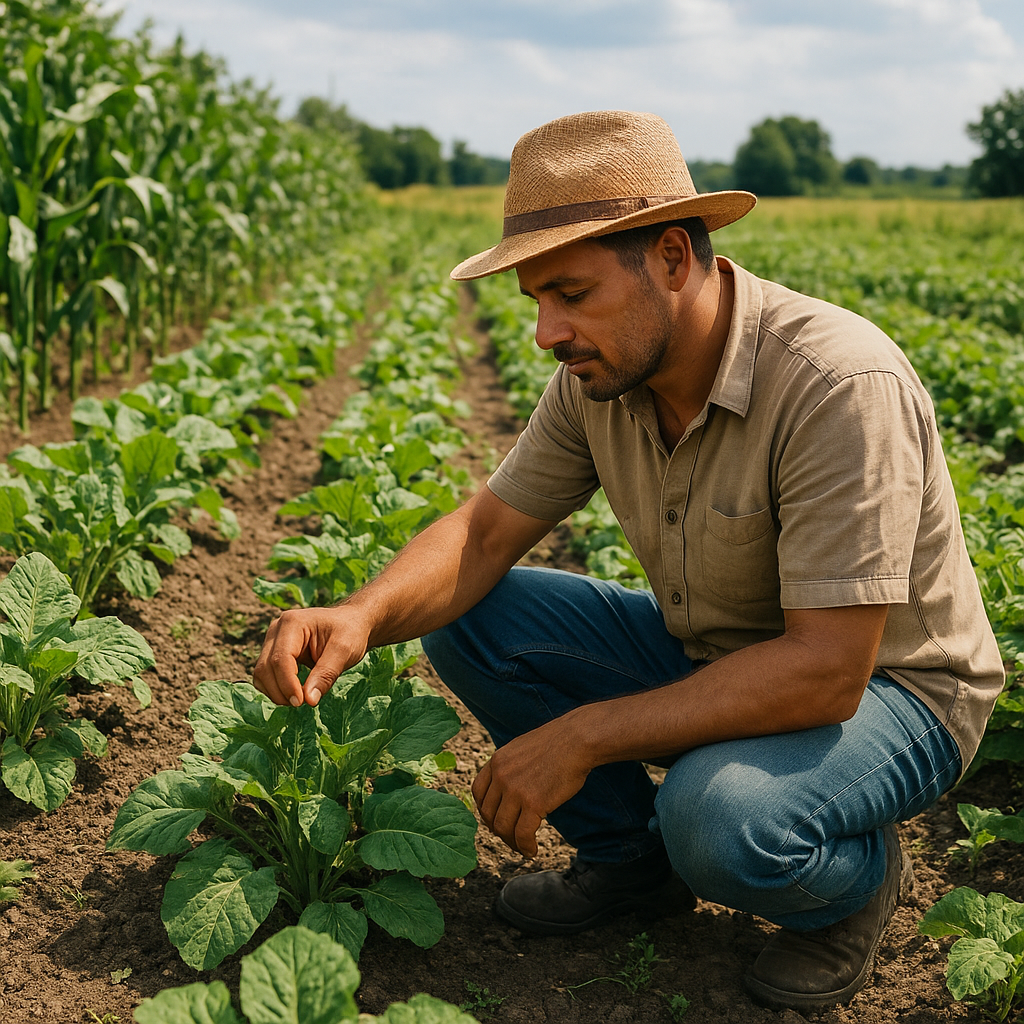
Raising rabbits for meat on a small farm can be a rewarding and sustainable venture, offering a source of high-quality protein and a potential income stream. This article will guide you through the essential steps and considerations for successfully raising rabbits for meat, from selecting the right breeds to managing their health and welfare.
Choosing the Right Rabbit Breeds
When it comes to raising rabbits for meat, selecting the appropriate breed is crucial. Not all rabbit breeds are suitable for meat production, as some are bred primarily for their fur or as pets. The ideal meat rabbit breeds are those that grow quickly, have a good meat-to-bone ratio, and are easy to manage.
Popular Meat Rabbit Breeds
- New Zealand White: Known for their rapid growth and excellent meat quality, New Zealand Whites are one of the most popular breeds for meat production. They are also known for their calm temperament, making them easy to handle.
- Californian: This breed is another favorite among meat rabbit farmers. Californians are known for their good growth rate and high-quality meat. They are also hardy and adaptable to various climates.
- Flemish Giant: While primarily known for their large size, Flemish Giants can also be raised for meat. They have a slower growth rate compared to other breeds, but their size can yield a substantial amount of meat.
- Rex: Although Rex rabbits are often raised for their fur, they can also be used for meat production. They have a good meat-to-bone ratio and a pleasant flavor.
When choosing a breed, consider factors such as growth rate, feed efficiency, and adaptability to your local climate. It’s also important to source your breeding stock from reputable breeders to ensure healthy and genetically sound rabbits.
Setting Up a Rabbitry
Creating a suitable environment for your rabbits is essential for their health and productivity. A well-designed rabbitry will provide shelter, space, and protection from predators and harsh weather conditions.
Housing Requirements
Rabbits require clean, dry, and well-ventilated housing. There are several options for rabbit housing, including hutches, cages, and colony systems. Each has its advantages and disadvantages, so it’s important to choose the one that best fits your needs and resources.
- Hutches: Hutches are individual enclosures that provide rabbits with their own space. They are typically made of wood and wire mesh, offering protection from predators and the elements. Hutches should be elevated off the ground to prevent moisture buildup and allow for easy cleaning.
- Cages: Wire cages are a popular choice for rabbit housing due to their ease of cleaning and durability. They should be equipped with solid flooring or resting boards to prevent sore hocks, a common issue in wire-floored cages.
- Colony Systems: In a colony system, rabbits are housed together in a larger enclosure. This setup allows for more natural social interactions but requires careful management to prevent aggression and ensure adequate space and resources for all rabbits.
Regardless of the housing type, ensure that each rabbit has enough space to move around comfortably. The housing should also provide protection from extreme temperatures, as rabbits are sensitive to heat and cold.
Feeding and Nutrition
Proper nutrition is vital for the growth and health of meat rabbits. A balanced diet will ensure that rabbits reach their full growth potential and produce high-quality meat.
- Pellets: Commercial rabbit pellets are a convenient and balanced source of nutrition. They are formulated to meet the dietary needs of rabbits and should be the main component of their diet.
- Hay: Hay is an essential part of a rabbit’s diet, providing necessary fiber for digestion. Offer fresh hay daily to promote healthy gut function and prevent digestive issues.
- Fresh Vegetables: Supplementing the diet with fresh vegetables can provide additional nutrients and variety. Leafy greens, carrots, and herbs are good options, but introduce new foods gradually to avoid digestive upset.
- Water: Fresh, clean water should be available at all times. Use water bottles or bowls that are easy to clean and refill.
Monitor your rabbits’ body condition and adjust their diet as needed to maintain a healthy weight. Overfeeding can lead to obesity, while underfeeding can result in poor growth and health issues.
Health and Welfare Management
Maintaining the health and welfare of your rabbits is crucial for successful meat production. Regular health checks, proper sanitation, and disease prevention measures will help keep your rabbits healthy and productive.
Common Health Issues
Rabbits are susceptible to several health issues, including respiratory infections, gastrointestinal problems, and parasitic infestations. Early detection and treatment are key to preventing these issues from affecting your entire herd.
- Respiratory Infections: Symptoms include sneezing, nasal discharge, and labored breathing. Ensure proper ventilation and cleanliness to reduce the risk of respiratory infections.
- Gastrointestinal Problems: Issues such as diarrhea and bloating can occur due to dietary imbalances or stress. Provide a consistent diet and minimize stressors to prevent these problems.
- Parasites: External parasites like mites and fleas, as well as internal parasites like worms, can affect rabbits. Regularly check your rabbits for signs of infestation and treat them promptly with appropriate medications.
Sanitation and Biosecurity
Maintaining a clean and sanitary environment is essential for preventing disease outbreaks. Regularly clean and disinfect housing, feeding equipment, and water containers. Implement biosecurity measures to minimize the risk of introducing diseases to your rabbitry.
- Quarantine New Animals: Isolate new rabbits for a period before introducing them to your existing herd to prevent the spread of diseases.
- Limit Visitors: Restrict access to your rabbitry to minimize the risk of disease transmission from outside sources.
- Practice Good Hygiene: Wash your hands and change clothing and footwear before and after handling rabbits to prevent the spread of pathogens.
Breeding and Reproduction
Successful breeding and reproduction are key components of a sustainable meat rabbit operation. Understanding the reproductive cycle and managing breeding pairs effectively will help you maintain a steady supply of rabbits for meat production.
Breeding Basics
Rabbits are prolific breeders, with a gestation period of approximately 30 days. Does (female rabbits) can be bred as early as 5-6 months of age, while bucks (male rabbits) are typically ready to breed at 6-7 months.
- Breeding Pairs: Select healthy, mature rabbits for breeding. Avoid breeding rabbits with known genetic defects or health issues to ensure the quality of offspring.
- Breeding Schedule: Plan your breeding schedule to align with your production goals. Consider factors such as market demand, space availability, and resource management when determining the frequency of breeding.
- Nesting and Kindling: Provide does with a nesting box filled with clean bedding material a few days before they are due to kindle (give birth). Monitor the doe and her litter closely to ensure their health and well-being.
After kindling, ensure that the doe has access to adequate nutrition and water to support lactation. Monitor the kits (baby rabbits) for growth and health, and wean them at around 6-8 weeks of age.
Processing and Marketing Rabbit Meat
Once your rabbits have reached the desired weight and age, it’s time to process them for meat. Understanding the processing and marketing aspects of rabbit meat production is essential for maximizing your returns.
Processing Rabbits
Processing rabbits for meat involves several steps, including slaughtering, dressing, and packaging. It’s important to follow humane and sanitary practices to ensure the quality and safety of the meat.
- Slaughtering: Use humane methods to slaughter rabbits, such as cervical dislocation or stunning followed by bleeding. Ensure that the process is quick and minimizes stress for the animal.
- Dressing: After slaughter, remove the skin, head, and internal organs. Clean the carcass thoroughly to prevent contamination.
- Packaging: Package the meat in airtight containers or vacuum-sealed bags to preserve freshness. Label the packages with the date of processing and any relevant information.
Marketing Rabbit Meat
Marketing rabbit meat can be challenging, as it is not as widely consumed as other meats. However, there is a growing interest in rabbit meat due to its nutritional benefits and sustainability.
- Local Markets: Sell rabbit meat at local farmers’ markets, butcher shops, or directly to consumers. Building relationships with local buyers can help establish a steady customer base.
- Restaurants and Specialty Stores: Approach restaurants and specialty food stores that focus on locally sourced or exotic meats. Highlight the quality and benefits of rabbit meat to attract interest.
- Online Sales: Consider selling rabbit meat online through your website or platforms that specialize in local food products. Ensure that you comply with regulations regarding the sale and shipping of meat products.
Educating consumers about the benefits of rabbit meat, such as its high protein content, low fat, and environmental sustainability, can help increase demand and acceptance in the market.
In conclusion, raising rabbits for meat on a small farm requires careful planning and management, from selecting the right breeds to marketing the final product. By following best practices in housing, nutrition, health management, and processing, you can create a successful and sustainable rabbit meat operation.

